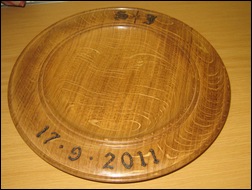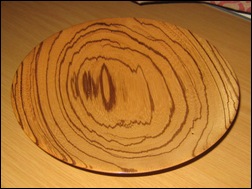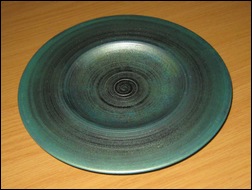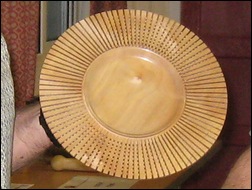Club Night Report
Wednesday 10th August 2016
Club Night Report for 10th August 2016 - observations by Vernon Hughes
 |
 |
 |
 |
 |
 |
 |
 |
 |
 |
 |
 |
 |
 |
 |
 |
 |
 |
 |
 |
Jason passed around a superb 'Pill Box' to give us a feel for the nature and calibre of his work whilst introducing the theme for the evening - a Pagoda Box having a square lid and a square base. A range of such boxes was on display. Lids must be a very good fit he declared such that a distinct 'pop' sound is produced when they are removed. The drier the timber used in box making the better to eliminate the chance of movement upsetting the lid fit. Dust-creating timbers should be avoided but Ash can be an ideal selection. Indeed, it was to be used for this evening's box. A blank had been pre-prepared with a spigot for chuck mounting at each end. Dimensions (excluding spigots) were approx. 4" length by say 4" square section. The point for separating the lid and body sections had already been partially cut. The lid section was about 1" thick. Whilst mounting the blank Jason emphasised the value of a ring centre in the tailstock to overcome the risk of splitting. He quickly completed the separation of lid and base sections using a Japanese hand saw.
Shaping and hollowing of the underside of the lid were completed by gouge, and the inside dome was perfected using his uniquely ground negative rake scraper, which was then passed round for close examination. It was recommended that the spindle speed be kept high (2,500 plus rpm), as this made the intermittent cutting on the square section easier to control. Sanding was undertaken very carefully (to avoid finger contact with the square section) using 120, 240 and 400 grits, the left hand gripping the right wrist firmly throughout to steady it absolutely. Jason emphasised that 'tight lids must be straight-sided' and proceeded to perfect this one with his oval skew (used without a handle for lightness and control), laid on its side, and double checking it using a small vernier. Sealer and soft paste wax were applied to the underside before removal of the part-formed lid, and chuck mounting of the base section of the blank.
The inside diameter of the top was measured with dividers at 69 mm. That dimension was then transferred to the top face of the base using dividers set at 34.5mm and a circle was described accordingly. After marking out the position for the square section of the base at the headstock end (approx. a good ¼" thickness) a start was made on shaping the body including concentration on the critical task of preparing the top of the base to receive the (tight-fitting) lid. A narrow strip was turned down progressively towards the line marked on the top face of the base until a point was reached at which it was appropriate to offer up the lid to check for fit. After several tests a perfect very tight fit was achieved. Moving on quickly - a narrow decorative bead was formed near the top just below the closed position of the lid. Work then commenced on shaping the top of the lid above the square section using a small bowl gouge with pulling then pushing cuts. The original spigot was soon reached and gradually reduced to a narrow cylinder that was then shaped using a fine beading tool to give a knob with three beads of decreasing size rounded off by a small bobble on the top. Sanding of the lid was not done at this stage. The lid was then removed, and hollowing of the base was soon achieved starting briefly with a small spindle gouge soon to be replaced with a small/ short bowl gouge using pulling cuts. Shaping was completed using the rounded corner of a modified tool to prevent snatch at the point where bottom and side intersect. On completion the base was sanded inside and out and the lid was re-fitted for sanding; again this was done with the left hand used to steady the right to prevent any tendency for the latter to move towards the square section.
 |
 |
 |
 |
 |
 |
The base was then removed from the jam chuck ready for hand presentation to lathe-mounted, wide polishing mops, first a stitched mop then a loose one. Polishing started with just a tad of hard wax on the first mop and then carnauba wax was used to achieve its instant-touch, high-gloss, hard finish. Jason reminded us that items can be re-buffed with carnauba and a lathe-mounted mop at any time during the life of a piece. The rough square edges had been retained but now would be the time to deal with them. A sheet of abrasive attached to a board was used to hand sand the edges - just work the assembled box carefully backwards and forwards to get the desired finish. Jason cautioned that care should be taken in this process to avoid damage to the corners.
At that point, all of a sudden, there we were with a highly skilled task completed! Jason rounded off saying that in his own workshop he could usually complete such a box in an hour. He also suggested that we consider a Club day visit to Axminster PTC as other clubs have done. After a question or two we had no difficulty in delivering a truly appreciative (richly deserved) round of applause! Thank you.
Footnote: There can have been no more illustrious a centre of woodworking excellence than Parnham House as it was when Jason attended. It was under the direction of contemporary master fine furniture designer - John Makepeace whose name can be spoken in the same breath as Chippendale, Sheraton and Hepplewhite (in my humble opinion). Although I attended demonstrations by Jason many years ago at Axminster PTC (along with Ian Full, Ken Crittle and the late Brian Oram in our Bristol days), I had not picked up on his Parnham House connection. The Avon and Bristol Club ran a day visit there as well and it was a supreme highlight in one's experience of woodworking and turning. The quality of fine furniture work at Parnham was, without exaggeration, breathtaking!
This month's Show and Tell theme was - A Platter. This was well supported, with an interesting and diverse range of items.
 |
 |
 |
|
A fine platter in zebrano secured 2nd place for Steve Body (shown on the left) 3rd place went to Dave Groves with a sycamore platter with an acrylic paint finish (shown on the right) |
 |
 |
| This month's Show and Tell winner was Arthur Kingdon's lattice work platter with 96 slots in oiled sycamore |
 |
 |
<Top of Page>
